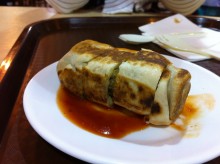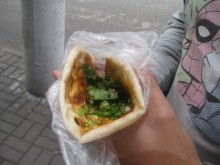
Just what is chou doufu (pronounced cho dough-foo)? If you don’t know Mandarin, you might think it sounds pleasant. The words roll off the tongue pretty cleanly and it sounds like it could be some sort of doughy deliciousness. Like a doughnut or something. But if you know Mandarin, then you know the true meaning of the words and they are nothing at all like a doughnut. Chou doufu means, quite literally, stinky tofu. And the name is certainly appropriate. As with much of the rest of Chinese cuisine, chou doufu comes in many forms, but the form I know best can be found on the street.








